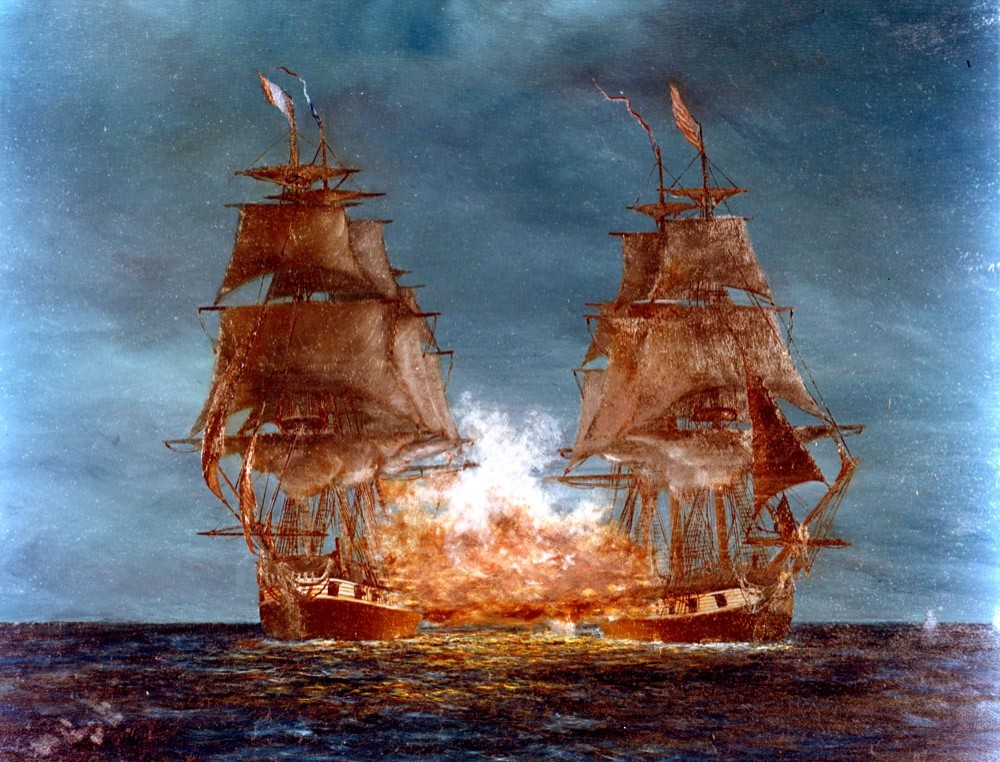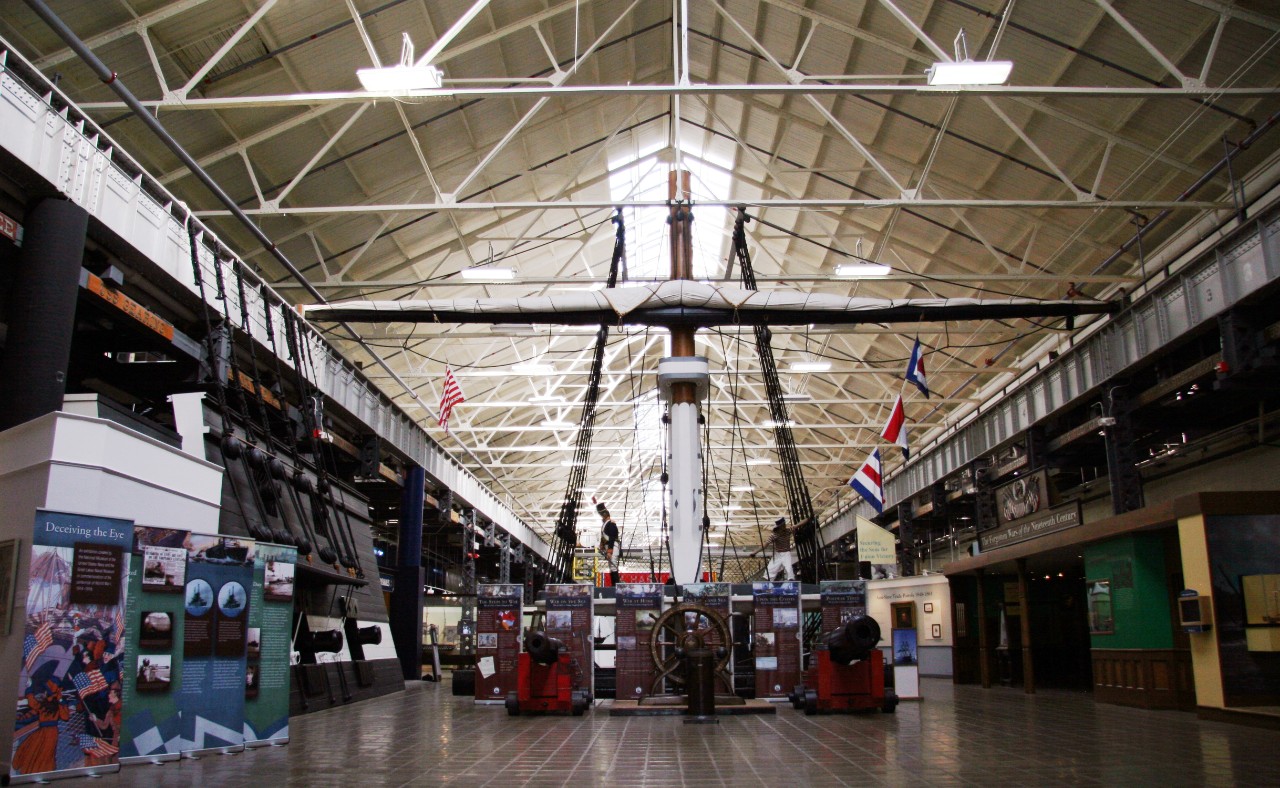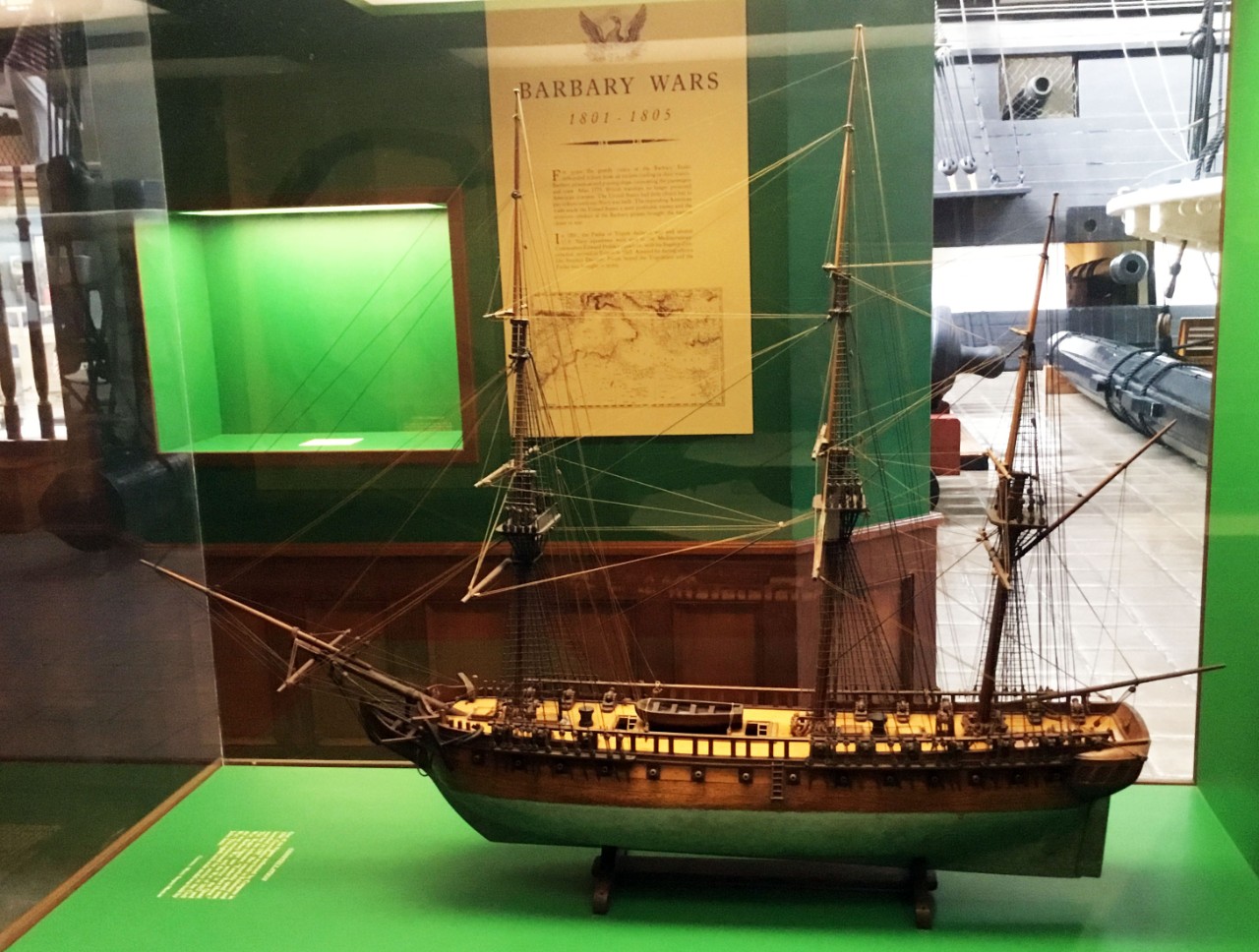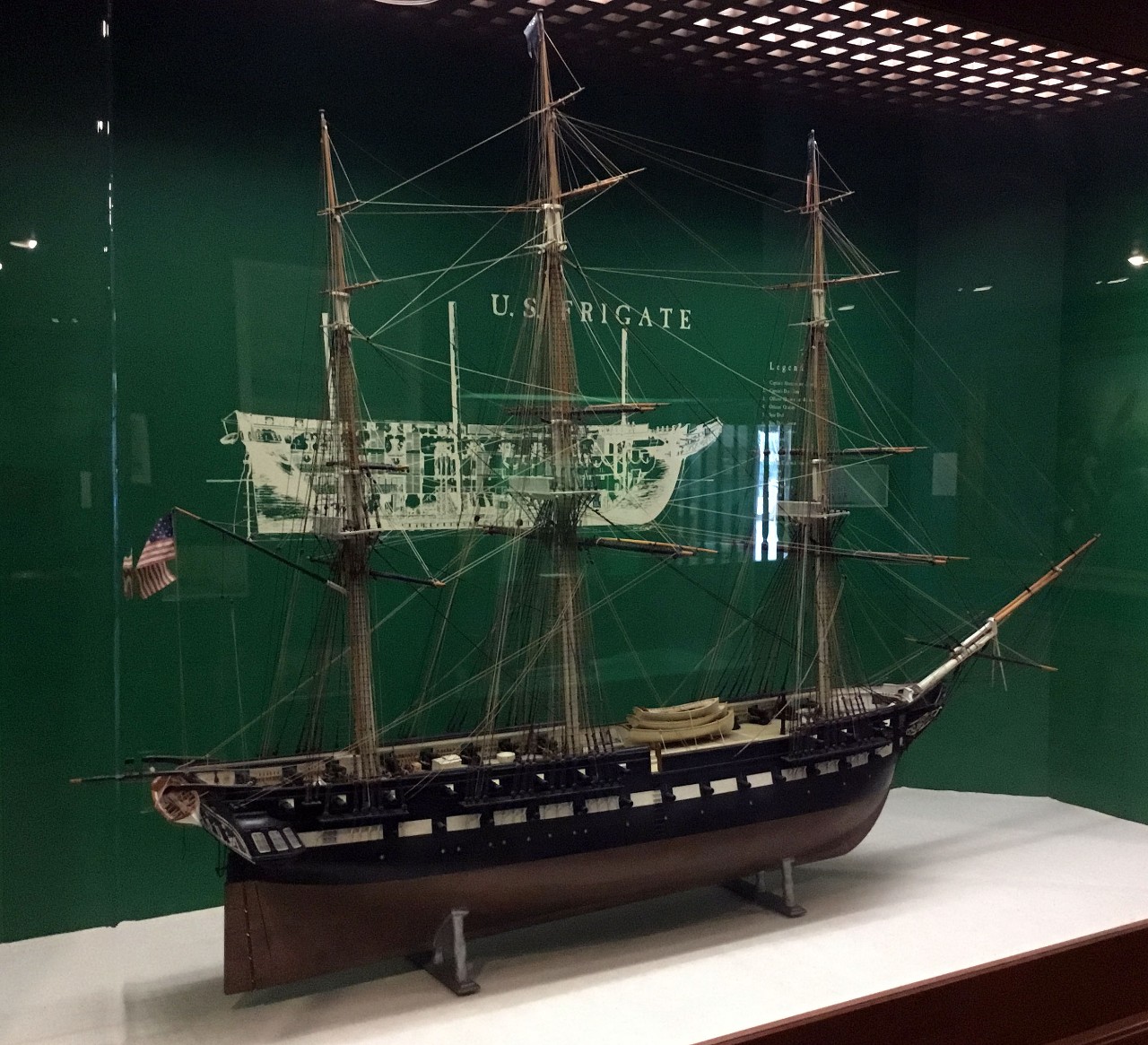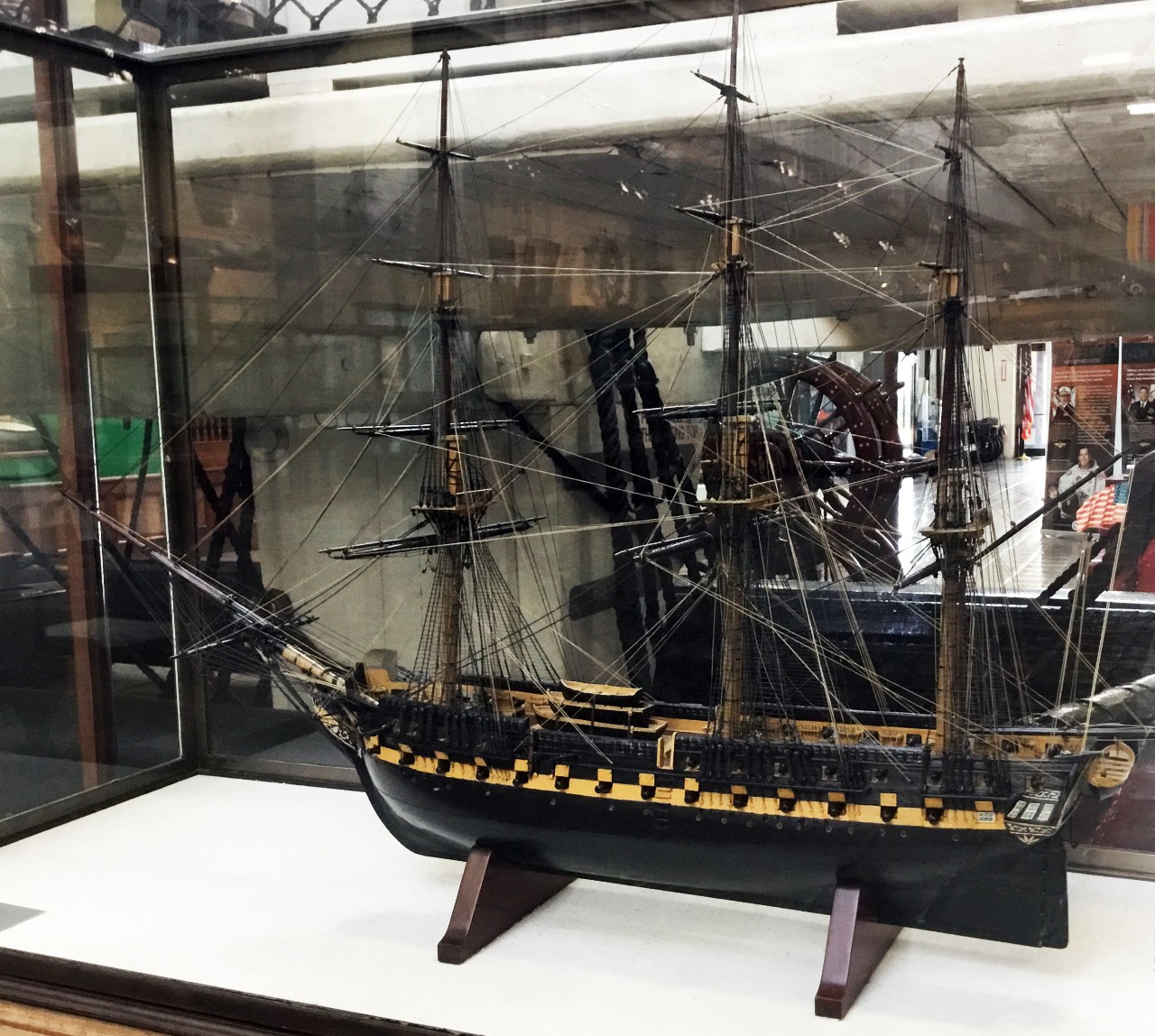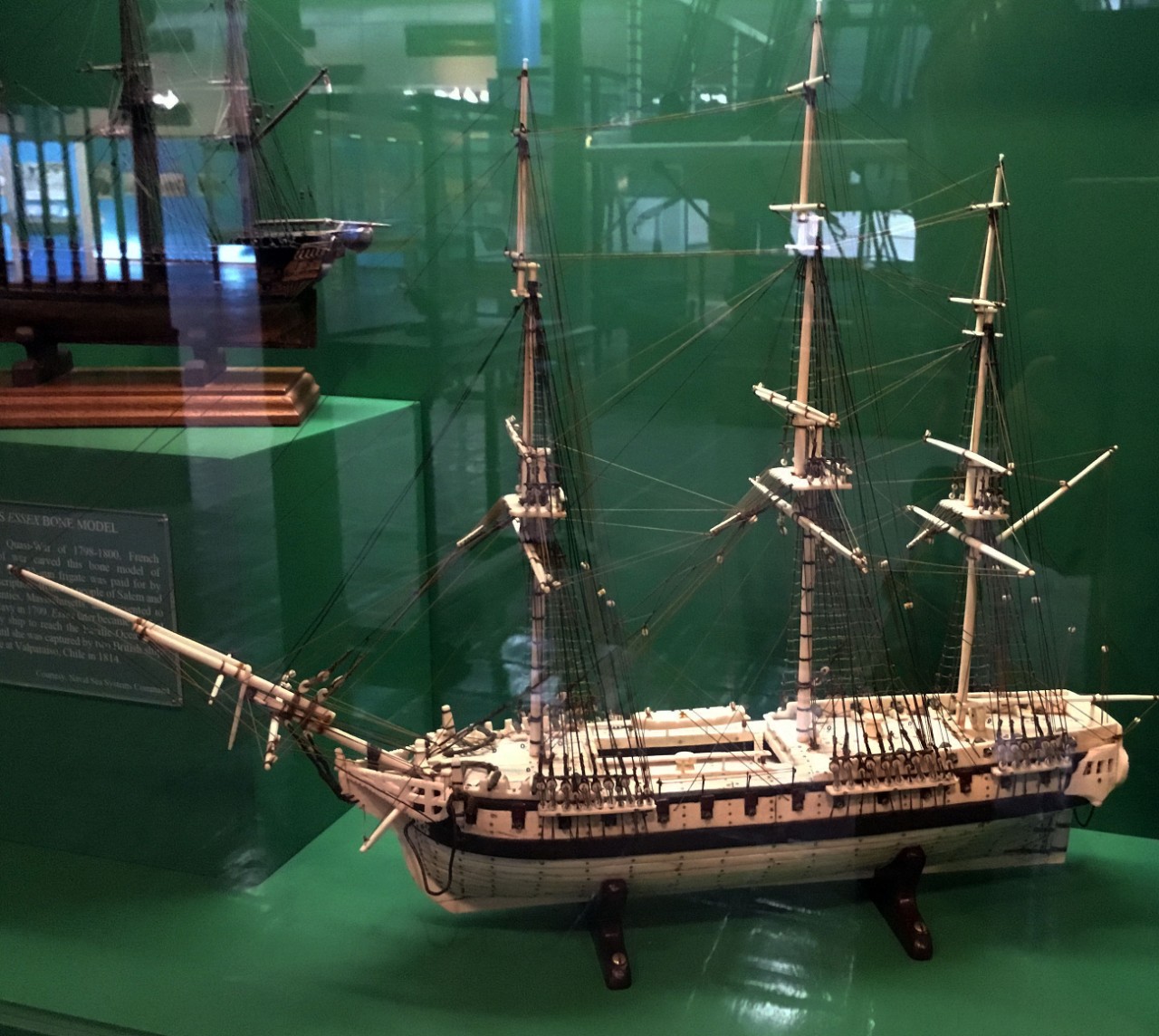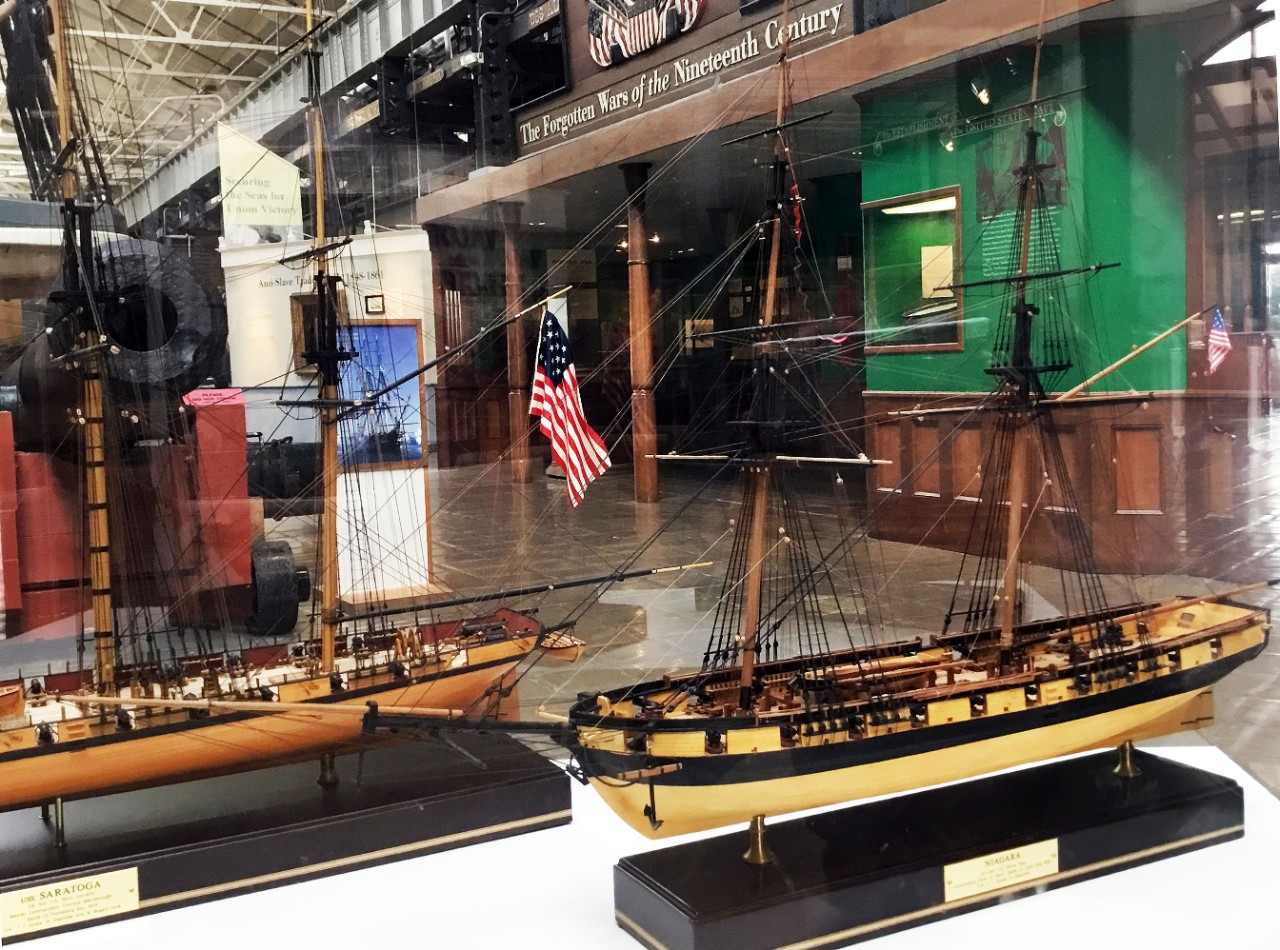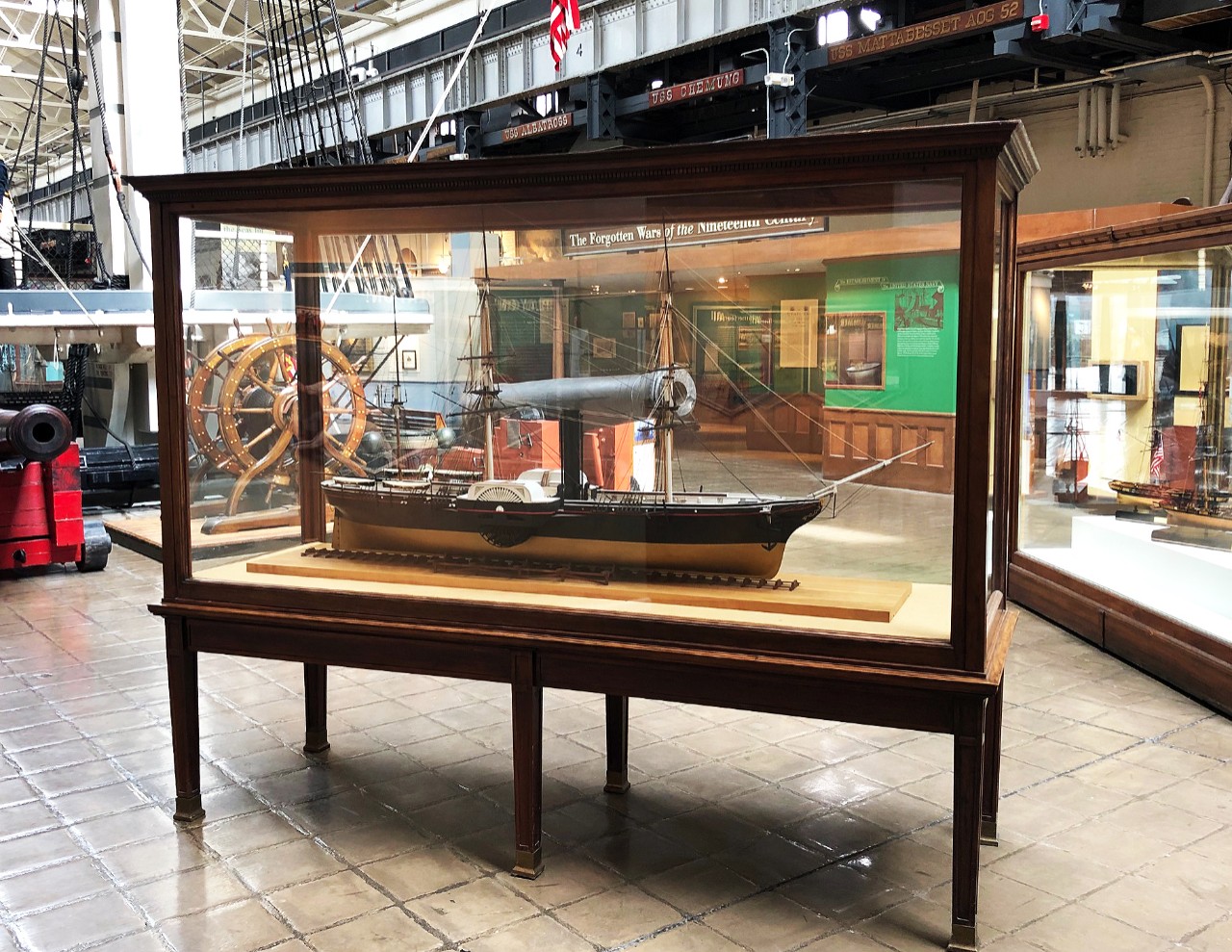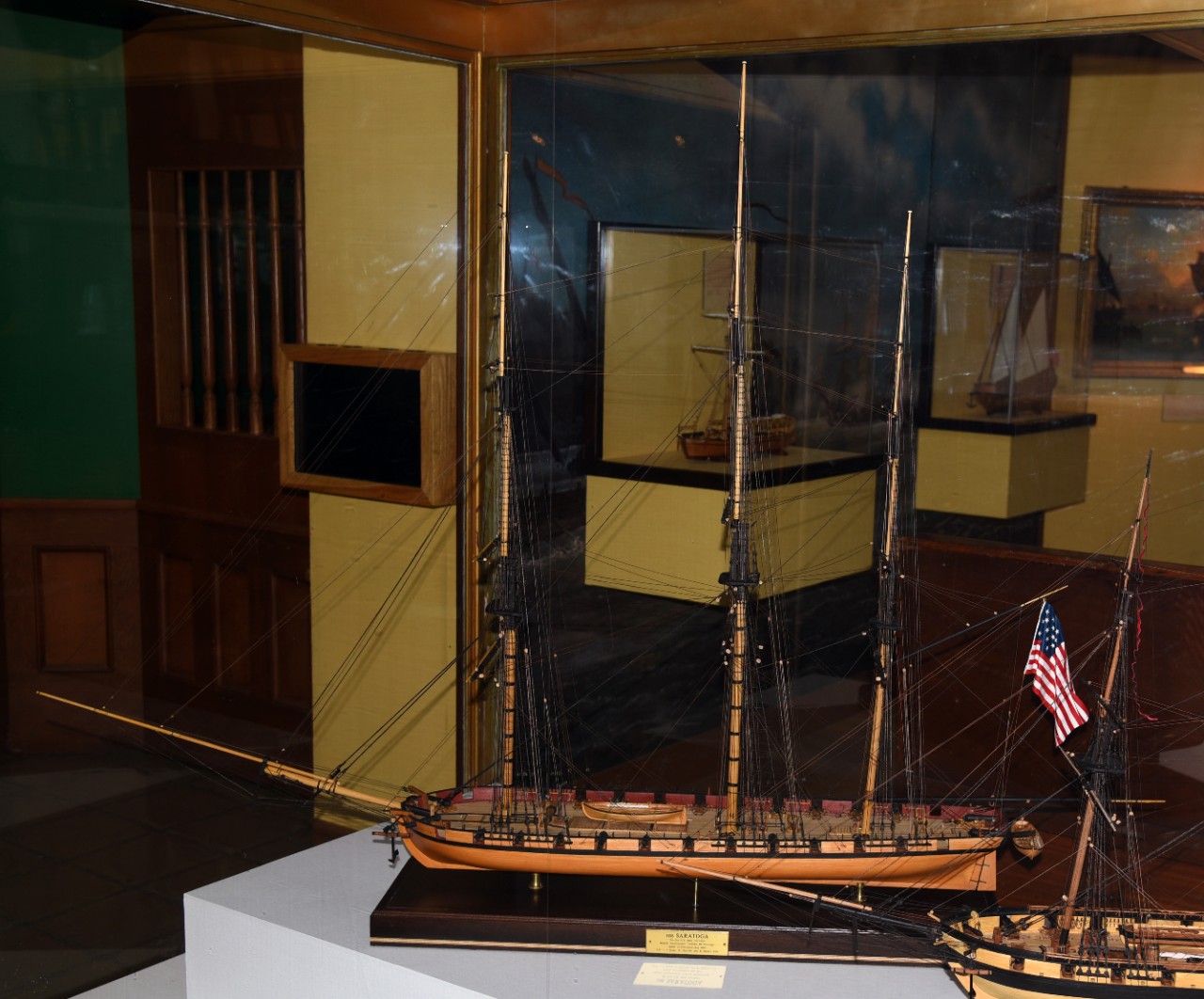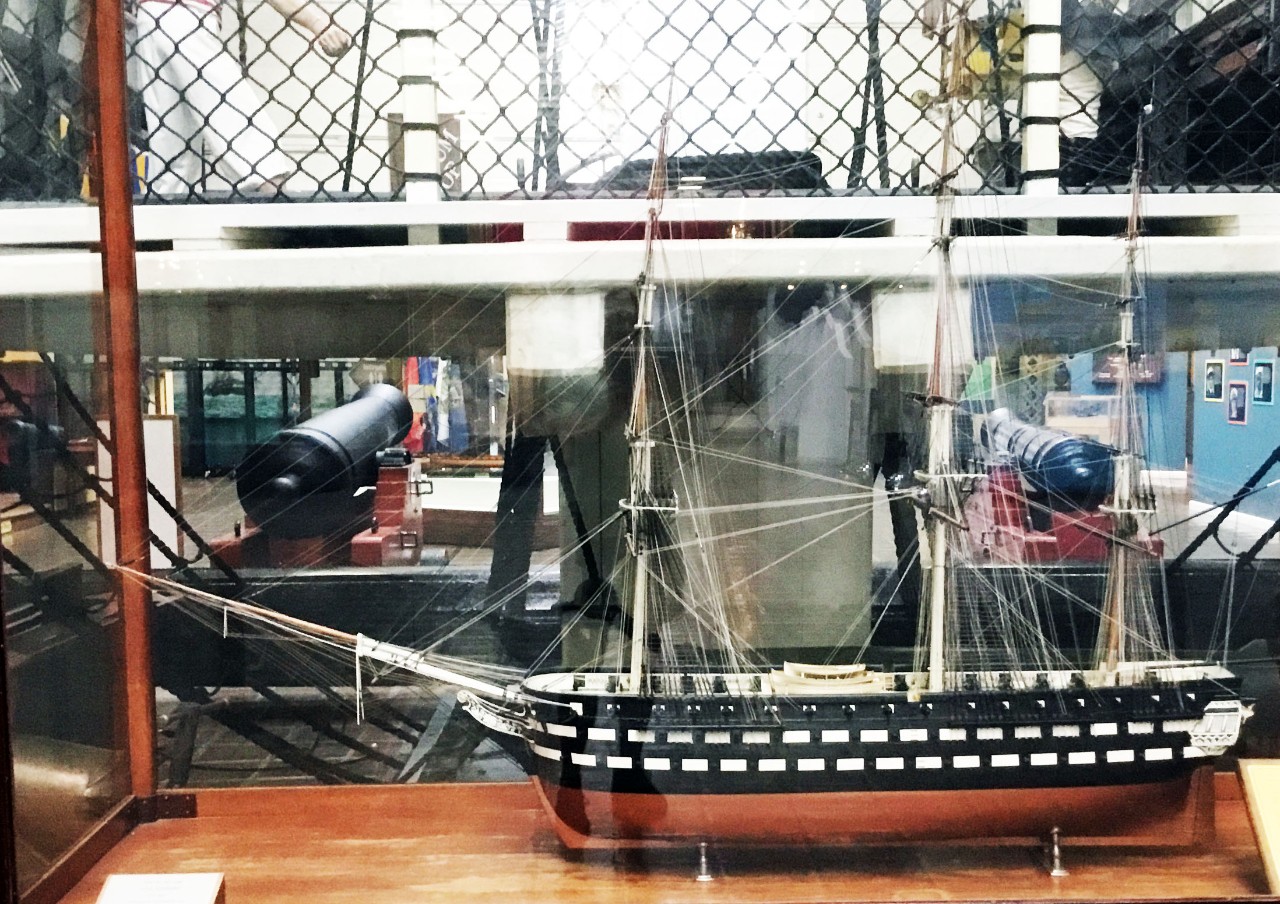The Forgotten Wars of the Nineteenth Century
Bldg. 76
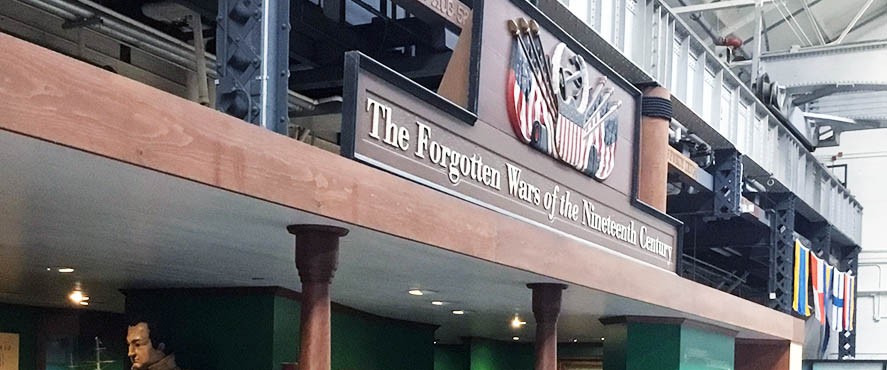
The Forgotten Wars of the 19th Century
The Quasi-War With France & The Barbary Wars
This exhibit traces the conflicts with France and the Barbary States that the new nation faced after the American Revolution. American and French ships battled in the West Indies even though there was no formal declaration of war. The Pasha of Tripoli declared war on the United States in 1801, and in 1815 President James Madison asked Congress to declare war on Algeria. American merchant ships were in great danger at this time because there was no national navy to protect them abroad.
While typically thought of as a rebuilding time in United States history, it was a busy and tough time for American seamen.
Interesting artifacts in the Forgotten Wars exhibit include:
- Sword and leather sea chest of James Sever, commander of USS Congress during the Quasi War with France
- Letter from John Paul Jones to Secretary of State John Jay reporting that Algeria had declared war on the U.S.
- Captain Thomas Tingey's uniform
- Diorama of the "Burning of USS Philadelphia" on February 16, 1804
- Painting, "Decatur Boarding a Tripolitan Gunboat," by D.M. Carter.
USS Constitution Fighting Top Exhibit
In refitting and refurbishing frigate Constitution, the oldest commissioned ship in the United States Navy, it was found necessary to replace the "top" or "fighting top" of her foremast.
This 3.5 ton platform (measuring 14 by 19 feet, and more than foot thick) surrounds the top of the foremast, serving not only to anchor and spread the rigging for the foremast, but also to furnish a standing place for men aloft.
The term "fighting top" derives from the platform's use during an engagement when Sailor and Marine sharpshooters were stationed there to pick off key enemy targets such as officers, helmsmen, and powder boys.
The Fighting Top installed here was removed from Constitution in 1976 after 50 years of service. It was restored at the Boston Navy Yard for use by the National Museum of the United States Navy as a major exhibit. The simulated masts, rigging, and models give museum visitors a feeling above the water on a wind-shipped sailing ship during a raging sea battle.
During the completion of the installation of the Fighting Top at the museum, the Naval Historical Center (now Naval History and Heritage Command) produced a pamphlet detailing the history of Fighting Top.
The War of 1812
Great Britain's interference with American shipping, the impressment of American sailors into the Royal Navy, and Indian raids supported by the British in Canada led Congress to declare war on Great Britain on June 18, 1812. Fighting on inland waterways and on the sea, the U.S. Navy stunned Great Britain by defeating them on Lakes Erie and Champlain. The end result was that Great Britain finally conceded their loss and negotiated the Treaty of Ghent (1814).
Interesting artifacts from the War of 1812 exhibit include:
- Prints of principle naval engagements
- Model of the frigate USS Constitution ("Old Ironsides")
- Desk of Commodore Thomas Macdonough
- Copper Spike used on one of Commodore Oliver H. Perry's ships in Lake Erie.
- Replica of the gun deck of the frigate USS Constitution
- Artifacts from Joshua Barney's Chesapeake Flotilla
- Scrimshaw on whalebone depicting the frigate USS Constitution under sail
- 19th Century Bone Powder Horn
- Copper Lamp with horn window from the frigate USS Constitution
- Copper Smoking Lantern from the frigate USS Constellation
- Bone Powder Horn from the frigate USS Constellation
- Ten Minute Hour Glass from the Ship-of-the-Line, USS Franklin
- Brass Speaking Trumpet from the Ship-of-the-Line, USS Franklin
- 12 pounder gun. Another view
- 20 pounder gun
- 32 pounder carronade
- 42 pounder gun - Long Tom Port quarter view Starboard quarter view
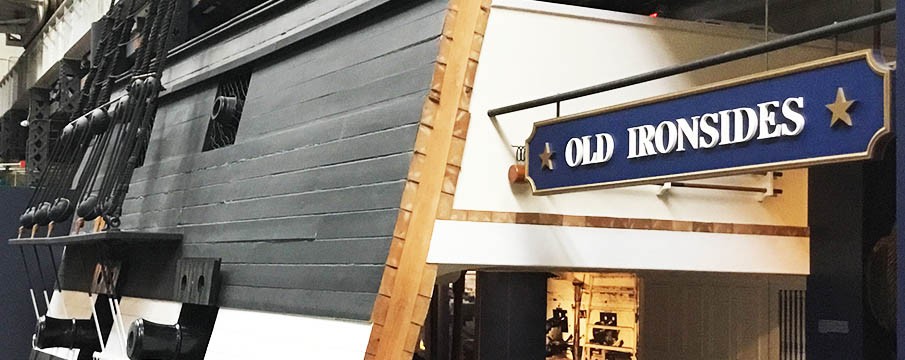
Replica of USS Constitution "Old Ironsides" gundeck.
The Mexican War
During the Mexican War, the U.S. Navy's home squadron, directed by Commodores David Conner and Matthew C. Perry, blockaded key Mexican ports along the Gulf of Mexico while the Pacific Squadron under Commodore John Sloat controlled ports on the Pacific side and captured California, thus helping to bring Mexico to her knees. The Navy also proved valuable through its quick transfer of men and supplies.
Interesting artifacts in the Mexican War exhibit include:
- Sword belonging to Commodore John Sloat commander of the Pacific Squadron
- Half-Model of the ship-of-the-line USS Independence
- Spanish Breech Loading 8-pounder gun
Ship Models in The Forgotten Wars of the 19th Century exhibit area
Click on ship model for a visual-art history of the ship.


